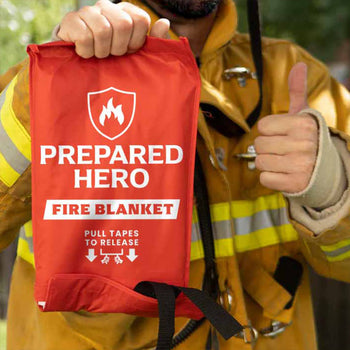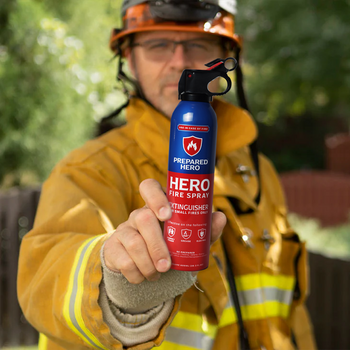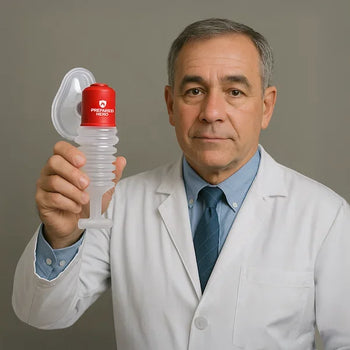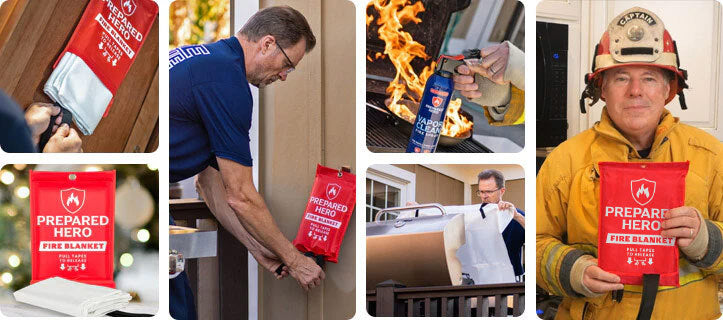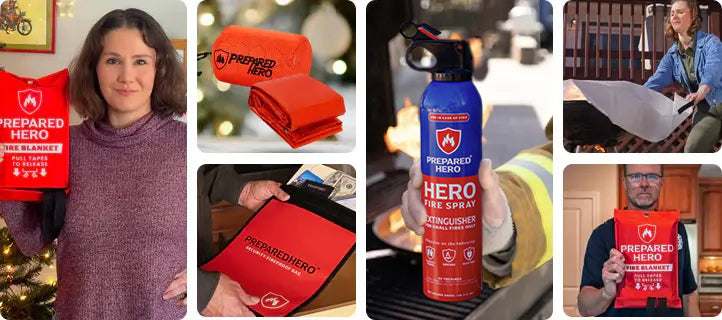Where you put your smoke detectors matters just as much as installing them. Proper placement makes sure they can detect...
According to the National Fire Protection Association (NFPA), cooking equipment causes around 61% of fires in eating and drinking establishments. This is where fire suppression systems come in.
It can quickly put out fires, protect your equipment, and keep your employees and customers safe. Let’s break down how it works, why you need it, and how to choose the right one below.
What Is a Food Truck Fire Suppression System?

A fire suppression system is like having a built-in firefighter in your food truck. It detects fires and puts them out before they get out of control. When triggered, it releases a chemical agent that smothers the flames and shuts off the gas or electricity to stop the fire from spreading. Since food trucks have small spaces and a high risk of grease fires, having a suppression system is necessary. They automatically work when they sense extreme heat, but they also have a manual pull station in case you need to activate them yourself.
But a fire suppression system isn’t enough on its own. You need fire prevention tools, too. Keep fire sprays, fire blankets, and fire protection gloves in your food truck. Fire sprays help with small flare-ups, fire blankets smother flames fast, and fire gloves protect your hands during emergencies. Having these extra tools makes a huge difference in a fire crisis.
Types of Food Truck Fire Suppression Systems

There are two types of fire suppression systems for food trucks: wet chemical and dry chemical. Let’s take a look at them below:
Wet Chemical Fire Suppression Systems
Wet chemical systems are designed for commercial kitchens and are the most common choice for food trucks. They spray a potassium-based solution that cools the fire and creates a protective barrier to prevent it from reigniting. This makes them perfect for handling grease fires, which are major fire hazards in mobile kitchens.
In particular, this type uses strategically placed nozzles over cooking equipment. The fusible links melt and trigger the chemical suppressant when the temperature gets extremely high. It then quickly cools hot grease and cuts off its oxygen supply to put out the fire. A pressurized tank stores the suppressant for a quick response. Many systems can also be integrated with fuel lines so they can shut off the gas supply when activated.
Dry Chemical Fire Suppression Systems
Dry chemical systems can handle various fire hazards beyond cooking fires. Instead of a liquid agent, they release a dry powder that smothers flames by cutting off the oxygen. Food trucks often use these as a backup system for fuel-related or electrical fires. While not as effective as wet chemical systems for grease fires, they offer extra protection for areas outside the cooking zone.
Both types are essential for food truck safety. Regular maintenance makes sure they function properly, so you can focus on serving great food without worrying about the risks and hazards associated with fires.
Do You Need a Fire Suppression System for Your Food Truck?

Yes, you need a fire suppression system for your food truck. Cooking equipment, grease, propane tanks, and the like make fire a real risk. A suppression system can put out flames fast, keeping you, your staff, and your business safe.
Plus, almost every city and state in the US requires food trucks to have one. Even if it’s not mandatory where you live, it’s smart to install one. Fires can spread fast in a small space, and a suppression system automatically cuts off fuel sources and sprays a fire-fighting agent. This could be the difference between a minor issue and a total loss. Plus, fire departments usually won’t approve your food truck without one.
The bottom line? A fire suppression system protects your business, customers, and food truck. It’s not just about following rules—it’s about peace of mind.
How to Choose the Right Food Truck Fire Suppression System

Picking the right fire suppression system for your food truck isn’t just about meeting legal requirements. It’s about safety, efficiency, and keeping your business. With tight spaces, hot cooking equipment, and flammable materials, you need a system that works for your setup. Here’s how to choose the right food truck fire suppression system:
1. Know Your Hood
Your hood and fire suppression systems work together to keep your food truck safe. Choosing the right hood isn’t just about ventilation. It also determines how well your fire suppression system can handle grease fires and other fire hazards. There are two main types of hoods:
Type I Hoods
Type I hoods are a must if you’re cooking with grease, oil, or anything that produces a lot of smoke. They have built-in fire suppression and grease filters to prevent buildup. You need a Type I hood if you have fryers, open-flame stoves, or woks.
Type II Hoods
These hoods remove heat, steam, and odors but don’t have built-in fire suppression. They’re used for things like pizza ovens or dishwashers.
The right hood system keeps your food truck safe, compliant, and operational. If your setup involves grease, oil, or high-heat cooking, a Type I hood with a kitchen fire suppression system is non-negotiable.
2. Think About Your Truck’s Size and Layout
Food trucks don’t have the luxury of space, so your suppression system has to fit without getting in the way. Consider the following:
- Where your cooking and cleaning tools are placed
- How your staff move inside and outside the truck
- Where windows, doors, and electrical outlets are located
Your suppression system should be compact but powerful enough to handle the grease and heat. The exhaust fan should also be efficient, meet height requirements, and be properly placed to prevent issues while driving.
3. Make Sure It’s Legal
Fire safety laws vary by city and state, but most require food trucks to have an automatic fire suppression system. The NFPA’s Food Truck Safety Sheet sets the standard. Plus, many areas now require inspections from certified fire protection professionals.
You should also check your local regulations before you buy a fire suppression system. You don’t want to install something that doesn’t meet the code. It’ll just cost you more to fix later.
4. Choose the Right Type of Suppression System
Fire suppression isn’t one-size-fits-all. Different types of fire require different extinguishing agents. Using the wrong system could make the fire worse instead of stopping it. Having the right suppression system can mean the difference between a small incident and losing your business.
There are two main types of fire suppression systems for food trucks: wet chemical and dry chemical. Wet chemical fire suppression systems work best if you’re cooking with grease and oil. They release a chemical that cools the flames and prevents the fire from reigniting. On the other hand, dry chemical fire suppression systems work best for fire hazards beyond cooking.
Combination wet and dry systems also exist but are more expensive. You likely need wet and dry suppression systems if your food truck has multiple fire risks.
5. Work with a Fire Safety Expert
Installing a fire suppression system isn’t a DIY job. You need a certified fire protection company to make sure it’s installed correctly and passes inspections. They can also help maintain your fire suppression system.
What Fire Suppression System Is Required for Food Trucks?

Food trucks need a wet chemical fire suppression system because they deal with grease, oil, and high-heat cooking. This system sprays a potassium carbonate-based solution that cools flames and stops them from reigniting. Having the right suppression system is crucial since you can’t put out grease fires with water. Most cities and states require food trucks to have one for fire safety purposes.
How Much Does It Cost to Install a Fire Suppression System in a Food Truck?

Installing a fire suppression system in a food truck costs between $2,000 and $6,500. The exact cost depends on the size of your setup and the type of system you need. A basic fire suppression system for a small truck will be on the lower end, while larger setups with more cooking equipment cost more. The price includes installation, its components, and making sure it’s fully operational. It’s a huge investment, but it is required by law and could save your business from a devastating fire. Skipping it isn’t worth the risk.
Can I Install a Fire Suppression System Myself?

No, you can’t install a fire suppression system by yourself. It’s dangerous because the fire suppression system might fail when you need it most. A faulty system won’t stop a fire and puts your business and lives at risk. Fire codes also require professional installation to make sure everything works properly and meets safety regulations. Cutting corners could lead to fines, insurance issues, or a complete disaster. Hire a professional because it’s worth it for your safety and peace of mind.
Conclusion
Fire safety isn’t something to take lightly, especially in a food truck. A fire suppression system isn’t just a legal requirement. It’s a lifesaver for your business, employees, and customers.
Wet chemical systems are the go-to for grease fires, but you may need additional protection depending on your setup. And for the love of all things safe, don’t install it by yourself. Please leave it to the pros. Remember, investing in a reliable fire suppression system gives you peace of mind, so you can focus on what matters: serving great food.
Do you want reliable, easy-to-use, and affordable tools on top of your fire suppression system? Check out Prepared Hero’s fire prevention tools here, and get up to 51% off on certain items. Stay prepared, hero!


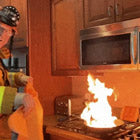 Fire
Fire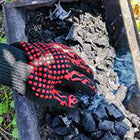 Safety
Safety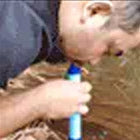 Survival
Survival Protection
Protection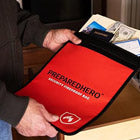 New
New
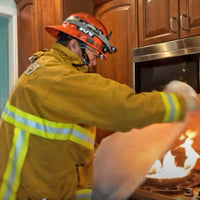 Fire
Fire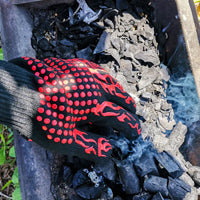 Safety
Safety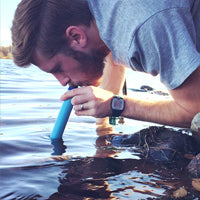 Survival
Survival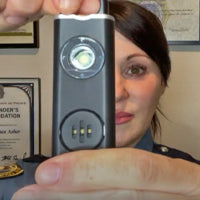 Protection
Protection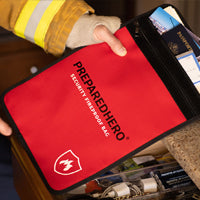 New
New
